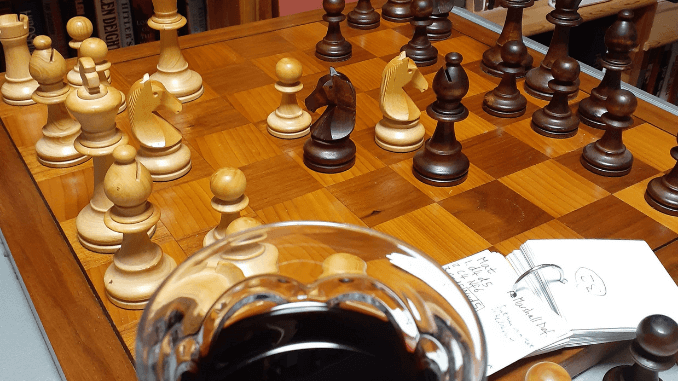
This is perhaps not such an “easy chess tip” because it takes time, effort and imagination to master, rather like chess itself. Nevertheless, memory training, especially for opening variations in a chess repertoire, is worth considering if you want to avoid losing control when your opponent pulls some unexpected move early on.
Opening Repertoire Memory Systems
I have created opening repertoire memory systems for both white, playing 1.d4, and black, playing 1… d6.
In this demo video I attempt to go through the first ten variations of the my white opening reportoire, which is based on John Watson’s book, A Strategic Chess Opening Repertoire for White. Watson’s book has been my guide to the Queen’s pawn opening for the last few years.
Memory training, especially for opening variations in a chess repertoire, is worth considering if you want to avoid losing control when your opponent pulls some unexpected move early on.
The First Ten Variations of the QGD
The first ten variations are all in response to different black set-ups in the Queen’s Gambit Declined, the opening moves of which are:
- d4 d5
- c4 e6 Here, black does not accept the offered gambit pawn on c4, hence the gambit is “declined”.
I took the opening variations in John Watson’s book and broke them down into 24 variation clusters such as the Queen’s Gambit Declined, Queen’s Gambit Accepted, the Slav, Marshall, Semi Slav, and so on.
The Queen’s Gambit Declined cluster has 16 opening variations and in the video I go through the first ten of them.
Memory Techniques
The key memory system I use is the Major System, which I have described in more detail in this post on one of my other blogs. I use the Major System to allocate a keyword to every one of the 184 opening variations in my 1.d4 opening repertoire.
I have also given every chess square a place name, and the back rank pieces are all named after famous people associated with the placename of the square they start on.
For example, square C1 is “Chatham” and the white Bishop is therefore called Nelson. At least, that is his default name. Place names and piece names can help you get a grip on where pieces go in any given variation.
Pattern Recognition
Another technique I use is pattern-recognition, especially in combination with the opening variation keyword.
For example, the keyword for the 7th variation is “key.” The seventh variation begins a three-sequence series of Chigorin variations within the Queen’s Gambit Declined cluster.
In the case of the 7th variation, the Knight and two Bishops happen to form a pattern that, to my mind, resembles a “key” shape, as I explain in the video. I also discovered a “K” formation at the end of the set up, which helps as K is of course the initial letter of “key”!
Storytelling and Oddball Associations
Finally, the technique that pulls it all together is storytelling. And the crazier the story, the easier it is to remember the sequence. For example, in the second variation, the keyword is “Noah.” The f8 Knight plays an important role in the opening. That knight happens to be called Nobunaga (the Japanese warlord of the Warring States Era). To remember the moves of this variation, I tell a story in which Noah takes Nobunaga into his ark and sales away, eventually coming to rest in Cambridge, where the unfortunate crew of the ark, Noah, Nobunaga and all are promtply put to the sword. There are some other zany embellishments to the story as you can see in the video!
Even if this kind of thing is not for you, I suppose the “easy chess tip” for today is simply to watch the video to discover ten variations in the Queen’s Gambit Declined opening while, I hope, enjoying the madness of the memory system maniac that I have become!
David Hurley
#ThePubChessBluffer
